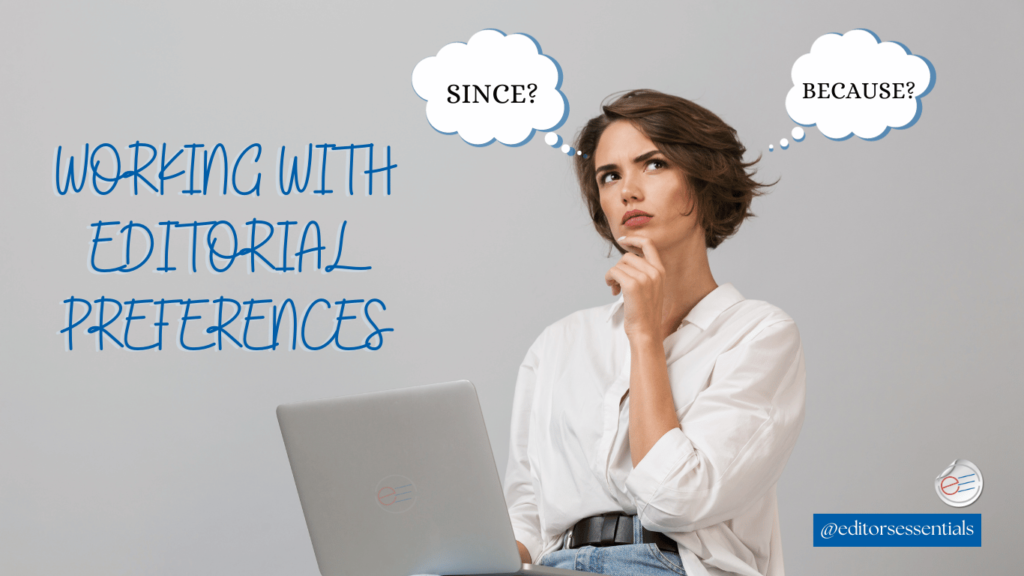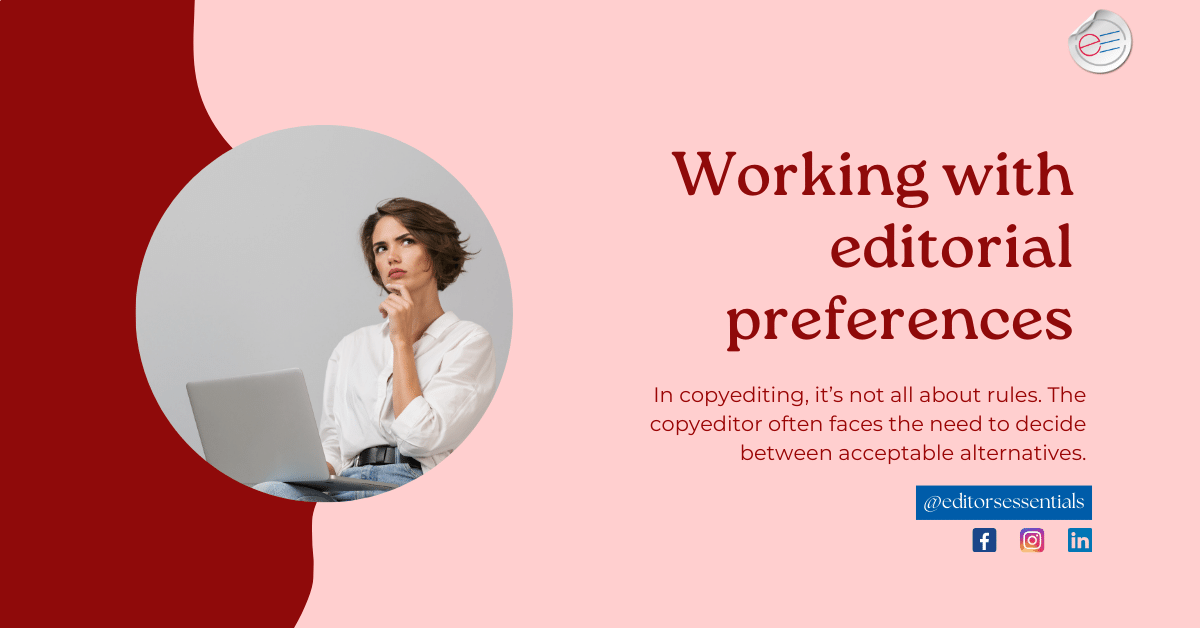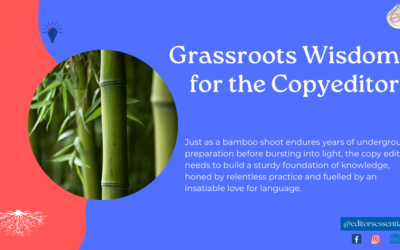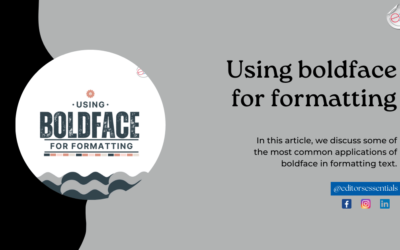Merriam-Webster Dictionary defines the word “peeves” as “a feeling or mood of resentment” or “a particular grievance or source of aggravation”. But how does this term apply to editing? We will discuss this in this post.
If you ask any copyeditor about their very first task as they start editing a manuscript, they would immediately say “understanding the publisher’s requirements”. Every publisher follows specific styles to ensure that their publications are consistent. The publisher usually has these requirements compiled in a single document, called the stylesheet or specifications (in short, specs).
In general, publishers prepare their stylesheets in accordance with a specific style guide (e.g. the Chicago Manual of Style or the American Psychological Association Manual); more often, they create a house style tailored to their requirements.
The specification hierarchy
For instance, a style guide is a global guide that collates all rules and conventions in copyediting. Sometimes, it prescribes; other times, it provides alternatives. Considering the bird’s eye perspective a style guide provides, it may not adequately address nuances in grammar, latest developments, or subject-specific points. For example, in chemistry manuscripts, the phrase “reduction in water” indicates a decrease in the level of water, whereas the phrase “reduction of water” indicates that water undergoes the chemical reaction of reduction. To address such issues, publishers prepare their own stylesheets. For instance, a publisher may follow the Chicago Manual of Style in general but may add a few stylistic points that are not mentioned in it to their stylesheet.
What is more interesting is when a publisher publishes manuscripts from different domains. Let’s assume that a publisher runs two sets of journals: one dealing with life sciences (e.g. biotechnology, chemistry, animal studies) and the other dealing with arts and social sciences (e.g. literature, psychology, philosophy). Here arises a strange scenario, wherein some stylistic aspects that are applicable for one journal may not make sense for the other. Consider the “reduction” example I mentioned above: that distinction is extremely important for a journal publishing chemistry manuscripts, whereas it is of little to no importance to a psychology journal.
With an aim of addressing these concerns, a publisher may have something intermediate between the style guide they follow and stylesheets for specific domains: the house style. The house style comprises stylistic points that apply to journals of all the domains a publisher deals with. Those style requirements that are specific to a particular journal are compiled in the journal stylesheet. In this case, a copyeditor needs to ensure that the requirements of both the style guide and the journal stylesheet are taken care of.
OK, what do you normally see in a stylesheet? Here are some instructions usually found in stylesheets:
- the English variant to be followed (e.g. US, UK, Canadian, Australian, etc.);
- punctuation style (e.g. whether to use the serial comma);
- date format (US or UK);
- casing of heading levels (title case or sentence case);
- citations (numbered references or the name-and-year type)
However, some publishers may have some stylistic requirements which a copyeditor may think nitpicky, in most cases either because he/she may find applying these requirements to the manuscript difficult or because the usages that need to be changed according to the stylesheet may in fact be generally acceptable in written English. That’s why I used the term “editing peeves” in the title of this post. Let’s discuss a few “peeves” I encountered as an editor.
The curious case of “due to”
One of the publishers I worked with wanted all the occurrences of “due to” in their manuscripts to be changed to any one of the following: “because of”, “owing to”, “attributable to”, “caused by”, or “as a result of” – whichever is the most suitable to the context.
The phrase “due to” is a standard expression in English that is followed by a phrase providing a reason for something. For example,
The match was called off due to rain.
This sentence can be easily rephrased as follows, without even slightly changing the meaning of the sentence:
The match was called off because of rain.
However, the phrase “due to” has a different meaning in sentences that are used to give credit to someone. For example,
Thanks are due to the volunteers who participated in this study.
In this sentence, you cannot replace “due to” with any of the above-mentioned suggestions because it has a different meaning than in the first one. Furthermore, sometimes the phrase “due to” may be used in combination with other standard expressions:
The results of this study may not be generalizable due in part to the small sample size of the study and the use of a self-reporting questionnaire to collect participant details.
In cases like the above, it is safe to retain the phrase “due in part to” even though the stylesheet recommends avoiding the usage of “due to”.
A confusion that has persisted since time unknown
I have noticed that some publishers advise editors to change “since” to “because” or “as” in their manuscripts. Similar to the “due to” case, this may also be tricky sometimes. Consider this example:
The match was called off since it started raining.
In this sentence, “since” can be easily substituted with “as” or “because”. However, consider this sentence:
The usage of mobile phones drastically increased since the advent of the twenty-first century.
In the above example, “since” cannot be replaced with “because” or “as”. To be more specific, the word “since” can play any of the following roles in a sentence: a conjunction, a preposition, or an adverb.
A conjunction “since” can be replaced with “because” or “as”, which are also – obviously – conjunctions. However, this is not possible in sentences where “since” is used as a preposition or an adverb. Have a look at these examples:
We have been living in this house since 2001. (“since” as a preposition)
I have known about his nature ever since I met him. (“since” as an adverb)
Moreover, there may be cases where you cannot decide whether a “since” used in a sentence can be replaced with “because” or “as”. Consider this example:
Since it has been updated in the stylesheet that “due to” needs to be changed to “because of”, we have been following this stylistic point strictly.
Though “since” is followed by a clause, thus making it possible to decide that it is a conjunction, the clause seems to be referring to a particular time point (i.e. the time when the stylesheet is updated). In such cases, unless you thoroughly understand the context, it is always safe to check with the author or retain the original version.
Don’t use “though” as a conjunction though it is a conjunction
“Though” is a subordinating conjunction that connects a dependent clause (aka subordinate clause) with an independent clause (aka main clause), as can be seen in the below example:
Though the results are significant, they cannot be considered groundbreaking.
In this example, the subordinate clause begins with the conjunction “though” and is followed by the main clause. Some publishers may not recommend using “though” in this context and instead propose using “even though” or “although”, which are also subordinating conjunctions.
You can use the suggested words in the above examples, and still, the meaning of the sentence remains the same.
As usual, there is a catch here as well. The word “though” can also be used as an adverb, which is synonymous with “however”. Consider this example:
Our team lost. It was a good game, though.
You cannot replace “though” with “although” or “even though” in this context because they are not adverbs.
An important note
You would’ve understood by now that editorial decisions regarding the cases we discussed so far require a thorough understanding of the context and that they cannot be made without sufficient thinking. If you are unsure of such scenarios and face challenges in decision-making, you can either notify the author of the issue and seek his/her help or safely retain the original version provided by the author. The former is highly recommended.
To know how better you understood the editing peeves we discussed so far, please feel free to participate in the below quiz.

Our latest blog post attempts to clarify some common confusions that a copyeditor may encounter while applying a few stylesheet requirements. We use the term “peeves” to refer to these requirements as a copyeditor may face editorial dilemmas in adhering to such requirements. Here is a short quiz to check your understanding of some of the preferences in copyediting.
What do you think about this post? Did you find this helpful? Please share your thoughts in the comments section.






0 Comments